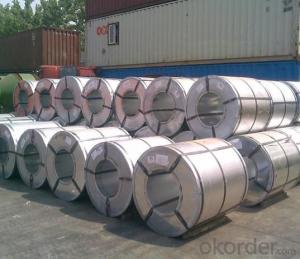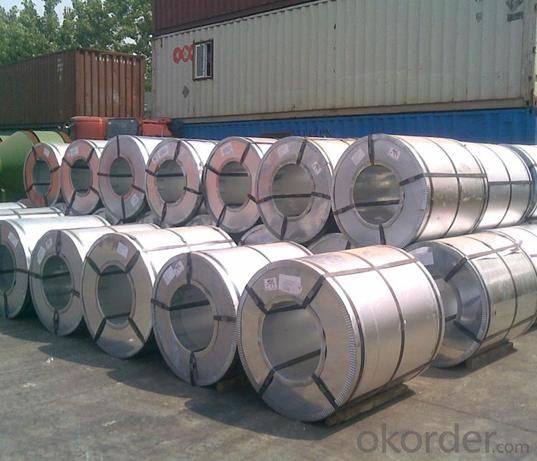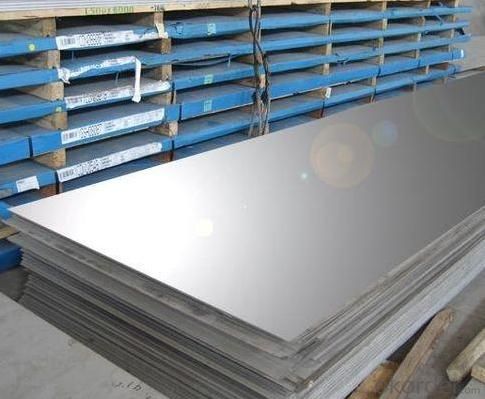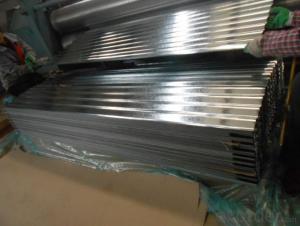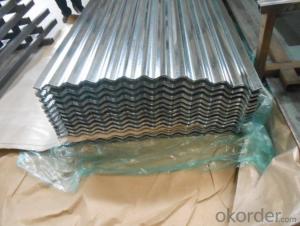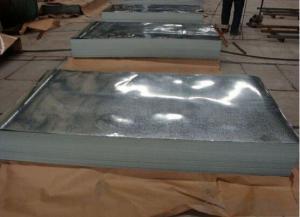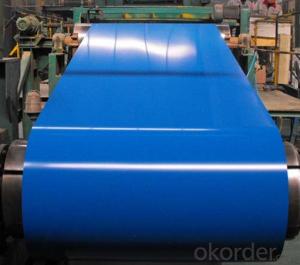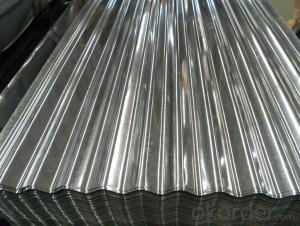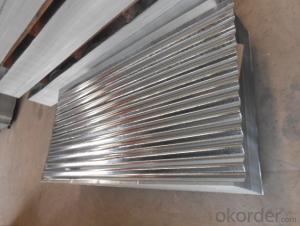Galvanized Steel Sheets for Currugated Steel Sheet- Hot Sale
- Loading Port:
- Tianjin
- Payment Terms:
- TT OR LC
- Min Order Qty:
- 50 m.t.
- Supply Capability:
- 5000 m.t./month
OKorder Service Pledge
OKorder Financial Service
You Might Also Like
1.Structure of Galvanized Steel Sheets for Currugated Steel Sheet- Hot Sale Description:
Hot-dip galvanized steel coils are available with a pure zinc coating through the hot-dip galvanizing process. It offers the economy, strength and formability of steel combined with the corrosion resistance of zinc. The hot-dip process is the process by which steel gets coated in layers of zinc to protect against rust. It is especially useful for countless outdoor and industrial applications. Production of cold formed corrugated sheets and profiles for roofing, cladding, decking, tiles, sandwich walls, rainwater protective systems, air conditioning duct as well as electrical appliances and engineering.
2.Main Features of Galvanized Steel Sheets for Currugated Steel Sheet- Hot Sale:
• Excellent process capability
• Smooth and flat surface
• Workability, durability
• Excellent anticorrosive property
• High strength
• Good formability
• Good visual effect
3.Galvanized Steel Sheets for Currugated Steel Sheet- Hot Sale Images
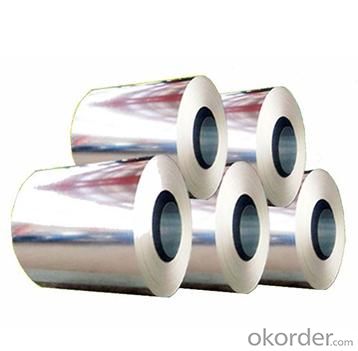
4.Galvanized Steel Sheets for Currugated Steel Sheet- Hot Sale Specification
Standard: ASTM, JIS,EN
Grade: CS, DX51D+Z,SGCC, SS 230~550,S220GD+Z~S550GD+Z, SGC340~SGC570
Thickness: 0.1mm~5mm
Width: max 2000mm
Coil weight:3-12 MT
Coil ID:508/610mm
Surface structure: zero spangle, regular spangle or minimum spangle
Surface treatment: Chromate treatment, Oiled/dry, skinpassed/non-skinpassed
Packing: Standard seaworthy export package
Technology test results:
Processability | Yield strength | Tensile strength | Elongation % | 180°cold-bending |
Common PV | - | 270-500 | - | d=0,intact,no zinc removal |
Mechanical interlocking JY | - | 270-500 | - | d=0,intact,no zinc removal |
Structure JG | >=240 | >=370 | >=18 | d=0,intact,no zinc removal |
Deep drawn SC | - | 270-380 | >=30 | d=0,intact,no zinc removal |
EDDQ SC | - | 270-380 | >=30 | d=0,intact,no zinc removal |
5.FAQ of Galvanized Steel Sheets for Currugated Steel Sheet- Hot Sale
We have organized several common questions for our clients,may help you sincerely:
1.How about your company?
A world class manufacturer & supplier of castings forging in carbon steel and alloy steel,is one of the large-scale professional investment casting production bases in China,consisting of both casting foundry forging and machining factory. Annually more than 8000 tons Precision casting and forging parts are exported to markets in Europe,America and Japan. OEM casting and forging service available according to customer’s requirements.
2.How to guarantee the quality of the products?
We have established the international advanced quality management system,every link from raw material to final product we have strict quality test;We resolutely put an end to unqualified products flowing into the market. At the same time, we will provide necessary follow-up service assurance.
3. How long can we receive the product after purchase?
Usually within thirty working days after receiving buyer’s advance payment or LC. We will arrange the factory manufacturing as soon as possible. The cargo readiness usually takes 15-30 days, but the shipment will depend on the vessel situation.
- Q: What are the common size limitations for steel coil production?
- The common size limitations for steel coil production depend on various factors such as the type of steel, manufacturing equipment, and transportation constraints. However, generally speaking, steel coils are typically produced within a range of widths between 600mm to 2,000mm, with thicknesses ranging from 0.2mm to 25mm. The maximum weight of a steel coil is usually around 25 metric tons, although this can vary depending on the specific production facility and transportation capabilities.
- Q: I want to purchase steel for construction purpose, What aspects should I keep in mind while deciding that which company should I contact for this?
- I'd keep in mind whether your potential supplier is close enough to still give you good service, and provide delivery when you need it. I'd want to contact as many local companies as possible, in order to get competitive bids. Then, I'd pick the lowest cost bids that I felt would still provide the service I needed. Most decisions of this sort, in the end, are based on price.
- Q: How do steel coils contribute to the HVACR equipment industry?
- Efficient heat transfer and effective functioning of HVACR systems are crucial roles played by steel coils in the HVACR equipment industry. These coils, made of high-quality steel, are integral components of air conditioners, heat pumps, refrigerators, and boilers. Facilitating heat transfer is one of the primary functions of steel coils in HVACR equipment. Designed to efficiently transfer heat between the refrigerant and the surrounding air or water, these coils utilize a large surface area and good thermal conductivity. As a result, HVACR equipment can effectively cool or heat a given space, ensuring optimal energy efficiency and reducing operating costs in residential and commercial applications. In addition to heat transfer, steel coils contribute to the overall durability and longevity of HVACR equipment. The use of corrosion-resistant steel in these coils helps prevent damage from moisture and other environmental factors. This reliability is particularly important as HVACR systems often face harsh conditions and must operate continuously to maintain comfortable indoor environments. Furthermore, steel coils offer versatility and customization options to meet specific HVACR requirements. Manufacturers can vary the size, shape, and configuration of the coils to fit available space and optimize performance. This flexibility enables efficient integration of steel coils into different HVACR equipment, ensuring they meet the specific heating and cooling needs of diverse environments. In conclusion, steel coils are indispensable in the HVACR equipment industry. They enable efficient heat transfer, enhance durability, and offer customization options, ensuring effective functioning and energy efficiency of HVACR systems. Manufacturers can provide reliable and long-lasting solutions for heating, ventilation, air conditioning, and refrigeration needs in residential and commercial settings by incorporating high-quality steel coils into their products.
- Q: Can steel coils be used in high-temperature applications?
- Yes, steel coils can be used in high-temperature applications. Steel is known for its excellent strength and resistance to heat, making it a suitable material for various industrial processes that involve high temperatures. It can withstand and maintain its structural integrity even under extreme heat conditions.
- Q: Went to top gun range in Houston, Tx. Guy there said no steel bullets..Anyone know why? Think i can shoot them anywhere else? Perhaps an outdoor gun range? The are monarch FMJ 9mm steel rounds..Thanks!
- However, I cannot under any circumstance travel with loaded rifle magazines in my car. Those I have to load at the range because it would be illegal for me to travel to the range with loaded magazines. Even if I don't have a rifle in the car, I cannot possess loaded rifle magazines while traveling. All long guns (shotguns included) must be unloaded and secured in the vehicle, including magazines or tubes. There are several states with restrictions against traveling with loaded rifle magazines, so I'd suggest you check your state laws first, and if it is permissible in your state, then find out if the range will allow it too.
- Q: What are the different methods of levelling steel coils?
- There are several methods used for leveling steel coils, depending on the specific requirements and applications. Some of the common methods include: 1. Roller Leveling: This method involves passing the steel coil through a series of rollers that exert pressure on the material, effectively reducing any residual stresses and removing any waviness or curvature. Roller leveling is commonly used for thinner gauge coils where a high degree of flatness is desired. 2. Stretch Leveling: This method involves stretching the steel coil beyond its yield point to eliminate any shape defects. The coil is subjected to tension in a stretcher leveler machine, which elongates the material and removes the inherent stresses. Stretch leveling is often used for thicker gauge coils where a higher degree of flatness is required. 3. Temper Milling: This method involves passing the steel coil through a temper mill, which is a cold reduction mill equipped with work rolls on top and bottom. The temper mill imparts tension on the coil, flattening it and improving its shape and surface quality. This method is typically used for higher strength steel grades. 4. Corrective Leveling: This method is employed when the steel coil has significant shape defects, such as wavy edges or center buckles. Corrective leveling involves selectively removing material from specific areas of the coil to achieve a flat and uniform surface. This process is often done using laser or plasma cutting machines. 5. Tension Leveling: This method is similar to stretch leveling, but it involves applying tension to the coil without exceeding its yield point. Tension leveling utilizes a series of bridle rolls to stretch the material, thereby removing any internal stresses and leveling the coil. This method is commonly used for higher strength and thinner gauge coils. These methods can be used individually or in combination depending on the specific requirements of the steel coil and the desired end product. Each method has its advantages and limitations, and the choice of leveling method will depend on factors such as the coil thickness, material properties, and desired flatness.
- Q: Can steel coils be coated with anti-corrosive substances?
- Yes, steel coils can be coated with anti-corrosive substances such as zinc, paint, or polymer coatings to protect them from rust and corrosion. These coatings act as a barrier between the steel surface and the surrounding environment, preventing contact with moisture and corrosive elements.
- Q: I know you can still but steel core ammo. I have read that it IS Armor Piercing (AP) and I have read it is not. Which is true? I am not looking for its AP capabilities. I want it if it is or is not AP. I live in Oklahoma. I need to know if it legal for me to purchase it in this state; and where can i get it? I am over 18, not a felon, etc. I have seen it sold online in Oklahoma years ago, but have read it is and isn't legal to purchase here. I am looking for 7.62x39 steel core for an SKS. If anyone knows where or how to get some, please let me know, if it's legal. Thanks.
- If it is the same stuff I have seen before it is NOT AP stuff. The steel core is a mild steel that is used as a filler to give the bullet a longer bearing surface by reducing the weight that would have been the additional lead core. If the bullet was filled with all lead it would be over the weight desired for the load OR the projectile would be shorter making it less stable in flight. Also lead is a more costly metal to use than the cheap mild steel that China is producing. Anyone that has bought a tool at Wally World, BLOWES, Or HOMERS DESPOT in the last decade can vouch for how cheap the Chinese steel is...
- Q: What are the potential dangers of handling steel coils?
- The potential dangers of handling steel coils include the risk of injuries due to their heavy weight and sharp edges, the possibility of crushing accidents or being struck by falling coils, and the potential for back or muscle strain from manually lifting or moving the coils.
- Q: What are the different methods of coil slitting for precision cuts?
- Coil slitting, a process utilized for cutting large coils of material into narrower strips, is achieved through various methods that offer distinct advantages and suitability for different applications. 1. Rotary Shear Slitting, the most commonly used method, employs rotating circular knives to shear the material and create multiple strips. The distance between the blades can be adjusted to achieve the desired width. This method guarantees high precision with smooth and burr-free edges. 2. Drag Knife Slitting involves the use of a knife with a drag or tangential orientation that follows the material's contour and produces accurate cuts. It is ideal for materials with irregular shapes and finds application in the textile industry to cut fabrics. 3. Scissor Slitting utilizes two blades that move in a scissor-like motion to cut the coil. This method is commonly employed for thinner materials, providing excellent control and precision. It is ideal for materials prone to deformation or wrinkling. 4. Razor Slitting involves the use of a single or multiple razor blades positioned perpendicular to the material. It is particularly effective for cutting stretchy or delicate materials, minimizing the risk of tearing or deforming. 5. Crush Cutting applies pressure from a hardened steel roller or an anvil against a softer material, causing it to deform and split along the desired cutting line. It is suitable for materials that are challenging to cut with sharp blades, delivering precise and clean cuts. In conclusion, the choice of coil slitting method depends on the material, desired precision, and specific application requirements. Each method offers unique benefits and can be tailored to meet specific cutting needs, ensuring accurate and efficient coil slitting processes.
Send your message to us
Galvanized Steel Sheets for Currugated Steel Sheet- Hot Sale
- Loading Port:
- Tianjin
- Payment Terms:
- TT OR LC
- Min Order Qty:
- 50 m.t.
- Supply Capability:
- 5000 m.t./month
OKorder Service Pledge
OKorder Financial Service
Similar products
Hot products
Hot Searches
Related keywords
